University of Anbar: A Green Oasis
Toward a Sustainable Academic Environment
Abstract
The "University of Anbar – A Green Oasis" project, launched on September 1, 2020, aims to transform the University of Anbar into a sustainable, green, and digital campus city by 2030. The project focuses on integrating university buildings with their environment through green and blue infrastructure, such as green spaces and artificial lakes, enhancing the academic and social environment. It promotes sustainable practices among students, faculty, and the wider community, aiming to elevate the university’s regional and international reputation by improving energy efficiency and reducing emissions. The project also seeks to develop environmental leadership skills and align with the United Nations’ Sustainable Development Goals (SDGs), particularly in health, education, clean water, clean energy, climate action, and global partnerships. Managed by distinguished academic leaders, including the university president, the project aspires to position the university as a global model for sustainability.
Introduction
During the recent years of terrorist operations in Al-Anbar province, the University of Anbar was subjected to extensive acts of sabotage and destruction, targeting its buildings and infrastructure. Even the university’s green cover did not escape the damage. In line with its commitment to restoring and rehabilitating gardens, planting open spaces and walkways, and coinciding with the reconstruction and renovation of infrastructure across various scientific domains including the adoption of modern teaching methods, the use of digital technologies, the enhancement of research quality, and the university's ascension into global rankings such as THE Impact Ranking, UI Green-Metric, QS Sustainability Ranking , and other prestigious local, regional, and international classifications, the President of the University of Anbar, Professor Dr. Mushtaq Talib Al-Nada, launched the initiative titled "University of Anbar – A Green Oasis."
This initiative aims to increase attention to green spaces and outdoor areas to create a calm and comfortable university environment that fosters social interaction among students and contributes to achieving the university’s objectives. It also aligns with the scientific and urban renaissance witnessed by the university.
.jpg)
"University of Anbar – A Green Oasis"
infrastructure during the period of terrorist operations that struck Al-Anbar province in recent years, during which even the university’s green spaces suffered significant damage.
Driven by its commitment to rehabilitating gardens, replanting open areas and walkways, and in parallel with the reconstruction and renovation of infrastructure across various academic fields—including the introduction of modern teaching methods, the adoption of digital technologies, and the enhancement of research quality—the University of Anbar launched a broad initiative.
In line with these rapid developments, the President of the University, Professor Dr. Mushtaq Talib Saleh Al-Nada, officially launched the initiative (University of Anbar: A Green Oasis) on September 1, 2020. This initiative aims to increase attention to green spaces and open areas to create a campus environment characterized by tranquility, comfort, and enhanced social interaction among students, thereby contributing to the university’s strategic objectives and aligning with the architectural and scientific renaissance witnessed by the institution.
In accordance with the directives of the Ministry of Higher Education and Scientific Research to establish a student-centered academic environment, several specialized committees were formed to ensure the success of the projects within the framework of the University of Anbar: A Green Oasis initiative. These efforts included planting climate-resilient plant species, developing projects for water delivery to the university and surface water drainage, launching solar and wind energy initiatives, implementing college-level water harvesting projects, and applying modern irrigation technologies to cultivate the green areas.
As a result of these comprehensive efforts, the proportion of green spaces at the university increased to over 70% of the total designated green areas on campus.
.jpg)
The university administration, through its programs and strategic plans, aims to establish a sustainable green university city with distinct features and a prominent identity. This initiative is intended to strengthen and further develop the positive aspects while addressing the challenges and obstacles to ultimately achieve the overarching goal: a sustainable green university.
The project also seeks to enhance the university’s regional and international reputation and improve its standing in global sustainability indices by promoting sustainable practices, increasing energy efficiency, reducing emissions, and implementing effective waste management systems. In doing so, the project's objectives align closely with Sustainable Development Goals (SDGs) 13 and 3, which focus on climate action and improving public health by mitigating climate-related crises.
This alignment is particularly significant given that the university is located in Al-Anbar province, an area characterized by its desert climate and environment.
The University of Anbar stands as one of the pioneering institutions striving to build an advanced academic community distinguished by environmental sustainability and natural resource conservation. Its flagship developmental project, titled "University of Anbar: A Green Oasis," aims to transform the university into a green space that harmoniously integrates education, research, and modern technology while maintaining environmental stewardship and optimizing resource utilization.
Main Objectives of the Project:
1. Increase Green Spaces within the University in Line with Environmental and Health Standards.
The project aims to expand green spaces within the university campus in accordance with global environmental and health standards, enhancing ecological balance and providing a healthy environment for students and academic staff.
2. Reduce the Impact of Climate Change by Planting Trees and Plants that Help Absorb Carbon Dioxide.
The project seeks to mitigate the negative effects of climate change by planting tree species and plants that can absorb carbon dioxide, thereby reducing air pollution and improving air quality within the campus.
3. Improve the Educational Environment by Creating a More Comfortable and Peaceful Atmosphere for Students and Faculty.
The project aims to enhance the educational environment by creating a peaceful and comfortable setting for students and faculty, contributing to increased academic productivity and concentration during classes.
4. Raise Environmental Awareness Among Students and Encourage Their Active Participation in Sustainability Projects.
The project seeks to elevate environmental awareness among students and encourage their active participation in sustainability projects, fostering a strong environmental culture within the university community.
5. Recycle Water for Irrigation, as Part of a Sustainable Resource Management Vision.
The project focuses on recycling water for use in irrigation, aiming to achieve sustainable resource.
Main Pillars of the "University of Anbar: A Green Oasis" Project
Ø Pillar 1: Infrastructure (Green Buildings)
This pillar supports Goal 11: Sustainable Cities and Communities
This pillar focuses on the development and enhancement of sustainable infrastructure, specifically the construction of green buildings that meet high environmental standards. The project aims to integrate eco-friendly architectural designs and technologies that reduce energy consumption, improve energy efficiency, and minimize the environmental impact of university facilities. The University of Anbar is one of the first educational institutions in Iraq to adopt the principle of green buildings in alignment with Goal 11 of the Sustainable Development Goals. Its buildings were designed based on thoughtful principles that adhere to the standards of environmentally friendly buildings. These buildings rely on natural lighting for all of their facilities, as well as proper ventilation, with large and numerous windows that allow sunlight and air to enter the buildings.
The rehabilitation of university buildings after their destruction by ISIS terrorist groups.
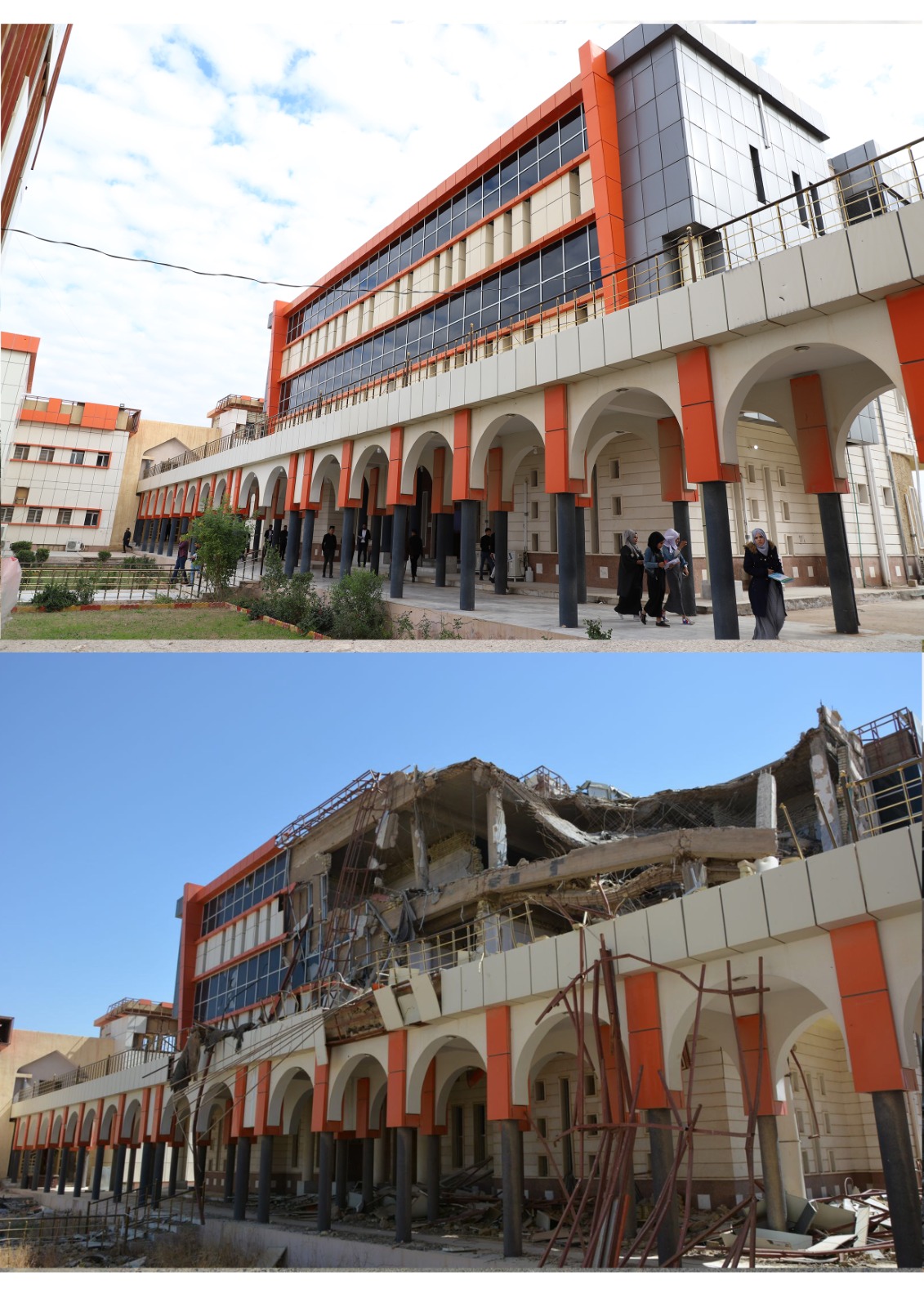
.jpeg)
.jpeg)
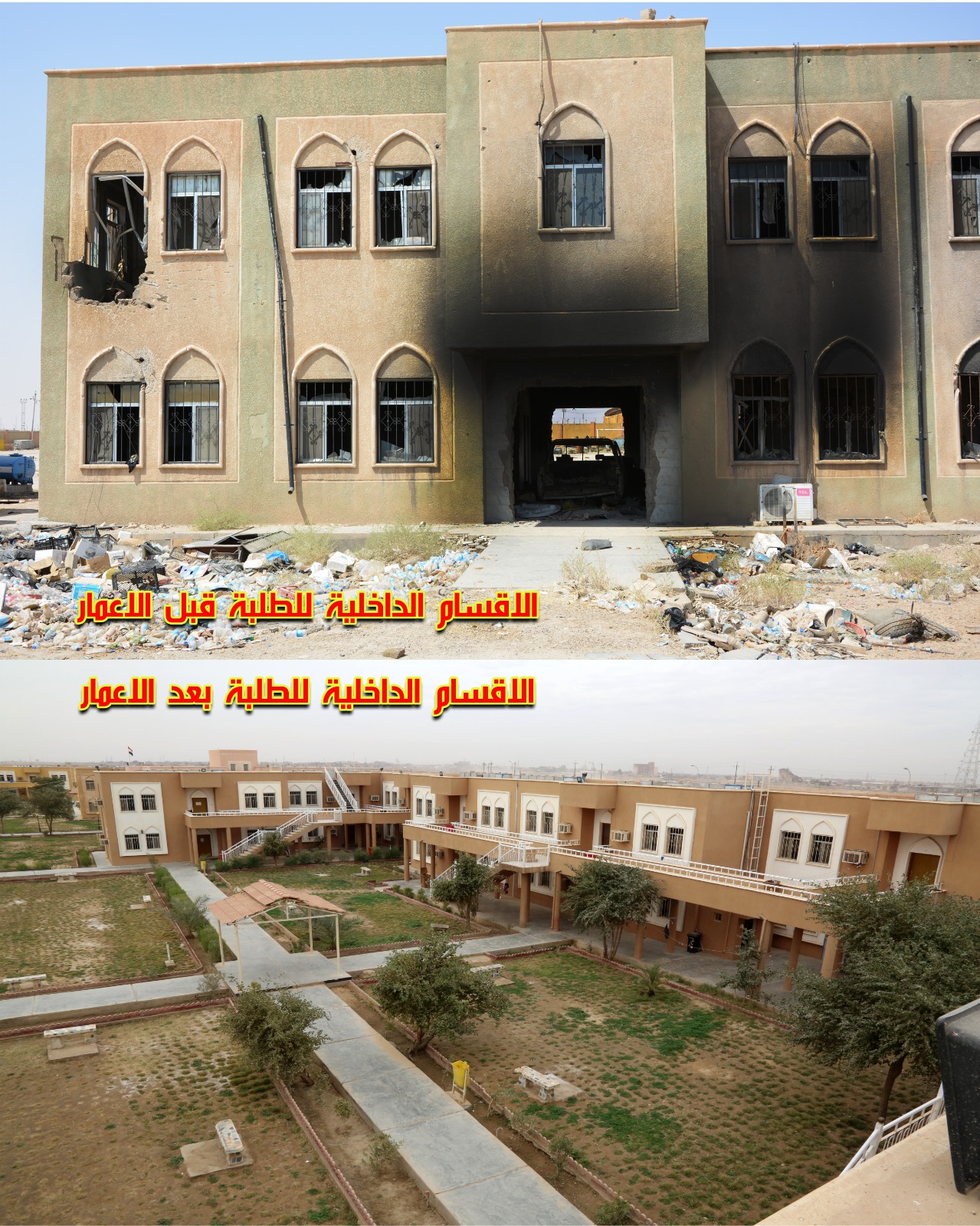
(1).jpeg)
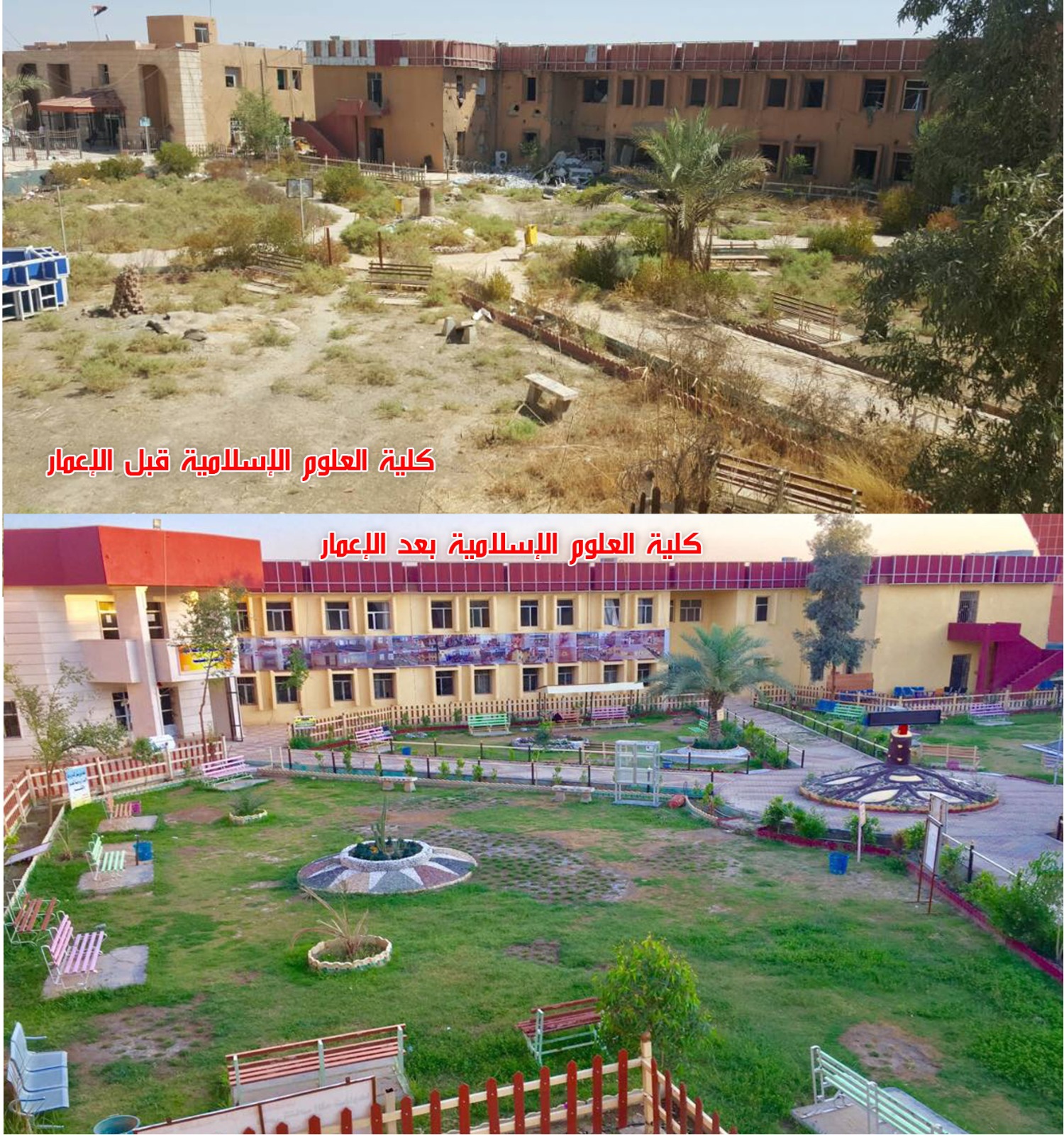
University of Anbar: A Green Oasis
Toward a Sustainable Academic Environment
Abstract
The "University of Anbar – A Green Oasis" project, launched on September 1, 2020, aims to transform the University of Anbar into a sustainable, green, and digital campus city by 2030. The project focuses on integrating university buildings with their environment through green and blue infrastructure, such as green spaces and artificial lakes, enhancing the academic and social environment. It promotes sustainable practices among students, faculty, and the wider community, aiming to elevate the university’s regional and international reputation by improving energy efficiency and reducing emissions. The project also seeks to develop environmental leadership skills and align with the United Nations’ Sustainable Development Goals (SDGs), particularly in health, education, clean water, clean energy, climate action, and global partnerships. Managed by distinguished academic leaders, including the university president, the project aspires to position the university as a global model for sustainability.
Introduction
During the recent years of terrorist operations in Al-Anbar province, the University of Anbar was subjected to extensive acts of sabotage and destruction, targeting its buildings and infrastructure. Even the university’s green cover did not escape the damage. In line with its commitment to restoring and rehabilitating gardens, planting open spaces and walkways, and coinciding with the reconstruction and renovation of infrastructure across various scientific domains including the adoption of modern teaching methods, the use of digital technologies, the enhancement of research quality, and the university's ascension into global rankings such as THE Impact Ranking, UI Green-Metric, QS Sustainability Ranking , and other prestigious local, regional, and international classifications, the President of the University of Anbar, Professor Dr. Mushtaq Talib Al-Nada, launched the initiative titled "University of Anbar – A Green Oasis."
This initiative aims to increase attention to green spaces and outdoor areas to create a calm and comfortable university environment that fosters social interaction among students and contributes to achieving the university’s objectives. It also aligns with the scientific and urban renaissance witnessed by the university.
.jpg)
"University of Anbar – A Green Oasis"
infrastructure during the period of terrorist operations that struck Al-Anbar province in recent years, during which even the university’s green spaces suffered significant damage.
Driven by its commitment to rehabilitating gardens, replanting open areas and walkways, and in parallel with the reconstruction and renovation of infrastructure across various academic fields—including the introduction of modern teaching methods, the adoption of digital technologies, and the enhancement of research quality—the University of Anbar launched a broad initiative.
In line with these rapid developments, the President of the University, Professor Dr. Mushtaq Talib Saleh Al-Nada, officially launched the initiative (University of Anbar: A Green Oasis) on September 1, 2020. This initiative aims to increase attention to green spaces and open areas to create a campus environment characterized by tranquility, comfort, and enhanced social interaction among students, thereby contributing to the university’s strategic objectives and aligning with the architectural and scientific renaissance witnessed by the institution.
In accordance with the directives of the Ministry of Higher Education and Scientific Research to establish a student-centered academic environment, several specialized committees were formed to ensure the success of the projects within the framework of the University of Anbar: A Green Oasis initiative. These efforts included planting climate-resilient plant species, developing projects for water delivery to the university and surface water drainage, launching solar and wind energy initiatives, implementing college-level water harvesting projects, and applying modern irrigation technologies to cultivate the green areas.
As a result of these comprehensive efforts, the proportion of green spaces at the university increased to over 70% of the total designated green areas on campus.
.jpg)
The university administration, through its programs and strategic plans, aims to establish a sustainable green university city with distinct features and a prominent identity. This initiative is intended to strengthen and further develop the positive aspects while addressing the challenges and obstacles to ultimately achieve the overarching goal: a sustainable green university.
The project also seeks to enhance the university’s regional and international reputation and improve its standing in global sustainability indices by promoting sustainable practices, increasing energy efficiency, reducing emissions, and implementing effective waste management systems. In doing so, the project's objectives align closely with Sustainable Development Goals (SDGs) 13 and 3, which focus on climate action and improving public health by mitigating climate-related crises.
This alignment is particularly significant given that the university is located in Al-Anbar province, an area characterized by its desert climate and environment.
The University of Anbar stands as one of the pioneering institutions striving to build an advanced academic community distinguished by environmental sustainability and natural resource conservation. Its flagship developmental project, titled "University of Anbar: A Green Oasis," aims to transform the university into a green space that harmoniously integrates education, research, and modern technology while maintaining environmental stewardship and optimizing resource utilization.
Main Objectives of the Project:
1. Increase Green Spaces within the University in Line with Environmental and Health Standards.
The project aims to expand green spaces within the university campus in accordance with global environmental and health standards, enhancing ecological balance and providing a healthy environment for students and academic staff.
2. Reduce the Impact of Climate Change by Planting Trees and Plants that Help Absorb Carbon Dioxide.
The project seeks to mitigate the negative effects of climate change by planting tree species and plants that can absorb carbon dioxide, thereby reducing air pollution and improving air quality within the campus.
3. Improve the Educational Environment by Creating a More Comfortable and Peaceful Atmosphere for Students and Faculty.
The project aims to enhance the educational environment by creating a peaceful and comfortable setting for students and faculty, contributing to increased academic productivity and concentration during classes.
4. Raise Environmental Awareness Among Students and Encourage Their Active Participation in Sustainability Projects.
The project seeks to elevate environmental awareness among students and encourage their active participation in sustainability projects, fostering a strong environmental culture within the university community.
5. Recycle Water for Irrigation, as Part of a Sustainable Resource Management Vision.
The project focuses on recycling water for use in irrigation, aiming to achieve sustainable resource.
Main Pillars of the "University of Anbar: A Green Oasis" Project
Ø Pillar 1: Infrastructure (Green Buildings)
This pillar supports Goal 11: Sustainable Cities and Communities
This pillar focuses on the development and enhancement of sustainable infrastructure, specifically the construction of green buildings that meet high environmental standards. The project aims to integrate eco-friendly architectural designs and technologies that reduce energy consumption, improve energy efficiency, and minimize the environmental impact of university facilities. The University of Anbar is one of the first educational institutions in Iraq to adopt the principle of green buildings in alignment with Goal 11 of the Sustainable Development Goals. Its buildings were designed based on thoughtful principles that adhere to the standards of environmentally friendly buildings. These buildings rely on natural lighting for all of their facilities, as well as proper ventilation, with large and numerous windows that allow sunlight and air to enter the buildings.
The rehabilitation of university buildings after their destruction by ISIS terrorist groups.
|
|
.jpeg) |
|
|
 |
|
|
 |
|
|
(1).jpeg) |
The accomplishments of this project
.jpg)
.jpg)
.jpg)
.jpg)
.jpg)
"Establishment and Rehabilitation of Greenhouses"
.jpg)
.jpg)
Ø Pillar 2: Afforestation, Greening, and Combating Desertification
This pillar supports Goal 15: Life on Land (Plant a tree to help protect the environment) and Goal 13: Climate Action (Reducing climate crises).
The initiative involves planting a wide variety of trees and plants across large areas of the university campus, contributing to improved air quality and reduced temperatures. The project aims to increase vegetation cover and promote biodiversity within the campus, transforming it into a green oasis that attracts students and researchers alike
.jpg)
.jpg)
.jpg)
Anbar University Tree Planting Campaign and Combating Desertification
University of Anbar launched a tree planting campaign aimed at increasing green spaces within the university campus and contributing to combating desertification. The campaign focuses on planting drought-resistant native trees that are well-adapted to the local climate conditions, helping to reduce soil erosion, improve air quality, and create a sustainable and healthy environment. The campaign serves as an educational opportunity for students by involving them in environmental conservation and raising their awareness of the importance of combating desertification. This initiative is part of the university's commitment to achieving sustainable development, enhancing environmental awareness, and supporting broader environmental goals in Iraq.
.jpg)
.jpg)
University of Anbar seeks to enhance environmental sustainability and preserve biodiversity. The university has planned the establishment of a natural reserve within its campus, with the project being overseen and implemented by the university's Construction and Projects Department. The project aims to convert part of the university's land into a protected natural environment, hosting a variety of local plants and animals. This reserve is expected to provide unique educational and research opportunities for students and researchers, in addition to raising environmental awareness among the university community. Therefore, the goals of this project align with Goal 13 and Goal 15 of the Sustainable Development Goals, focusing on wildlife conservation, environmental protection, and mitigating climate crises, especially given that the university and its sites are located in Al-Anbar Governorate, which has a desert climate and environment.
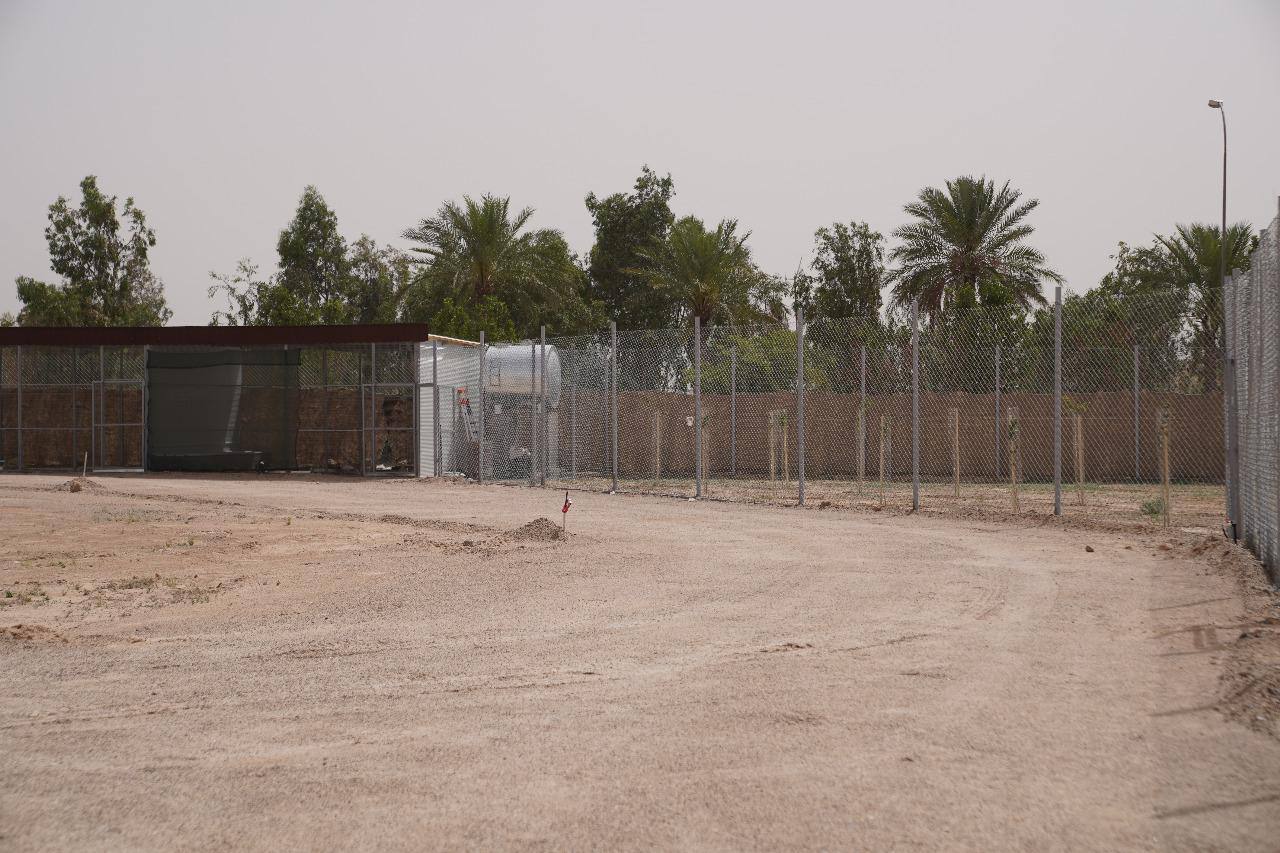
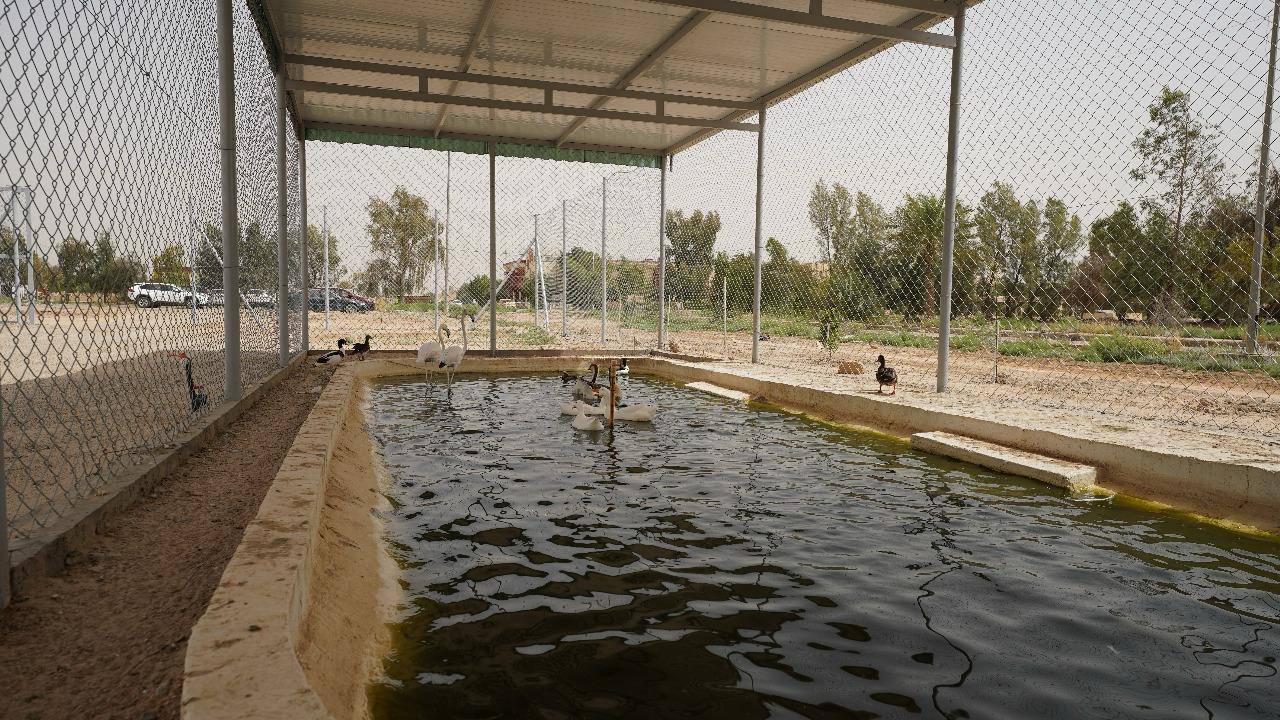
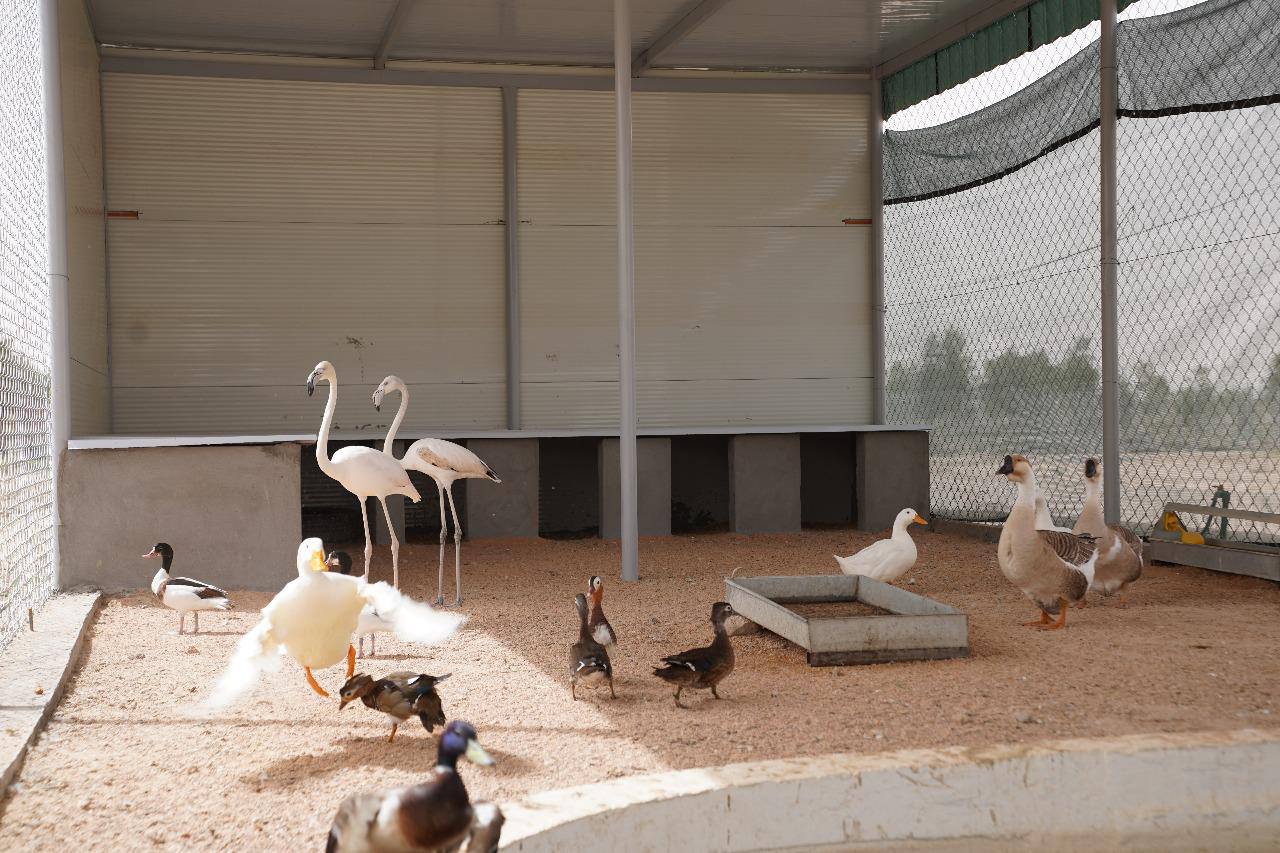
Natural Reserve at University of Anbar
Ø Pillar 3: Renewable Energy (Clean Energy)
This pillar supports Goal 7: Affordable and Clean Energy.
Clean energy is one of the fundamental pillars for global progress toward sustainability. Ensuring access to modern, affordable, reliable, and sustainable energy for all is the seventh goal of the United Nations' Sustainable Development Goals. In order to reduce environmental pollution and decrease reliance on fossil fuels, achieving this goal requires expanding access to energy sources and transitioning to clean and renewable energy. The use of clean energy is essential for achieving this goal because it offers an environmentally friendly and sustainable alternative to fossil fuels. Examples of clean energy sources include solar energy, wind energy, hydropower, and geothermal energy.
1. Solar Energy:
The project includes the use of solar and renewable energy to power part of the university’s facilities, reducing the university's reliance on traditional energy sources and decreasing carbon emissions. Solar panels are installed on buildings to provide electricity to the university's facilities in an environmentally friendly manner.
.jpg)
.jpg)
Solar panels are used to generate clean electricity for the purpose of being utilized by the university's staff and students.
.jpg)
At Anbar University, solar energy (solar panels) generates approximately 520 KWh, which accounts for one-third of the total energy consumption. There are entire buildings that operate solely on solar energy, including:
· The Central Library
· The Renewable Energy Center
· The Upper Euphrates Basin Development Center
· The Desert Studies Center
.jpg)
The Continuing Education Center, which relies entirely on clean energy.
.jpg)
2. Wind Energy:
Wind turbines have been installed, producing 7.5 KWh as an experiment to generate clean energy and harness wind as a secondary source for energy production. This project requires financial support to increase clean energy production and subsequently expand it to other Iraqi universities.

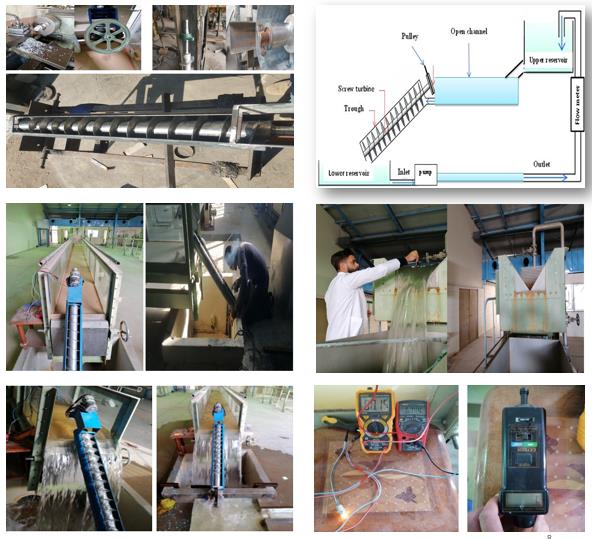
Ø Pillar 4: Water Management
This pillar supports Goal 6: Clean Water and Sanitation.
Water management is one of the key pillars of the project, as the university seeks to use modern techniques such as drip irrigation systems and water recycling. These methods help conserve water and reduce waste, while also contributing to the preservation of water resources, which are vital for the region. Therefore, water management at Anbar University is part of the university’s efforts to enhance environmental sustainability and reduce water consumption, especially with the increasing demand for and scarcity of water in the region. The effective management of water aims to strike a balance between water use on campus and its limited resources, while ensuring that water is available for students and staff in a healthy and clean educational environment.
Water Harvesting:
A water harvesting system has been established in several university buildings to collect rainwater for use in irrigating gardens and green spaces, aiming to achieve sustainability and promote water conservation. The study showed very encouraging results for this pioneering and important project, and the university has been motivated to work on spreading this culture within the community, which can significantly contribute to achieving the Sustainable Development Goals by providing water and increasing green spaces, thereby reducing the impact of emissions and global warming. Additionally, the rooftops of these systems can be used to install solar panels, which could contribute to supplying the irrigation systems with electricity. Therefore, the goals of this project align with Goal 6 of the Sustainable Development Goals, which focuses on improving water use efficiency to reduce water stress, and Goal 13 on mitigating climate crises. This project also aligns with Goal 14, which focuses on conserving water resources and using them sustainably, especially since the university's locations are situated in Al-Anbar Governorate, which has a desert climate and environment
.jpg)
.jpg)
Water Management Strategies at Anbar University:
1. Installation of Smart Irrigation Systems:
The university uses drip irrigation systems to reduce water waste and ensure precise water delivery to areas in need. These systems help conserve water and reduce evaporation compared to traditional irrigation methods.


2. Water Recycling:
The university aims to utilize water from sinks and public facilities after treatment for irrigating gardens and plants within the campus, helping to reduce the demand for fresh water.




3.Updating Water Infrastructure:
By regularly maintaining pipes and facilities, water leakage and waste are minimized. Additionally, water-efficient fixtures, such as low-flow faucets, are installed in sanitary facilities.

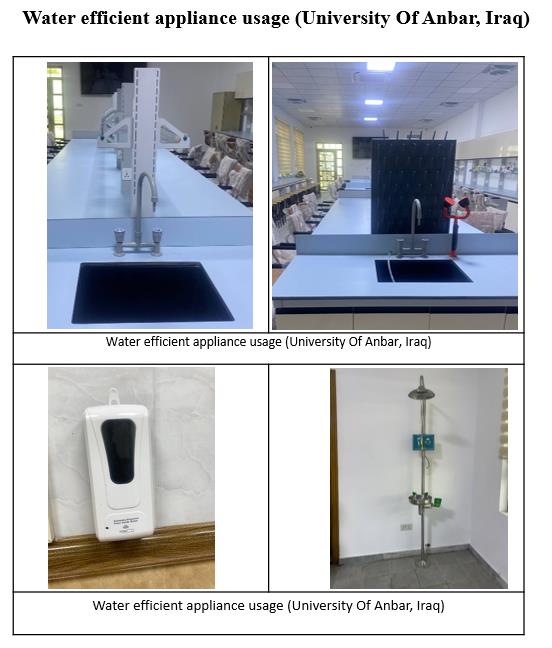
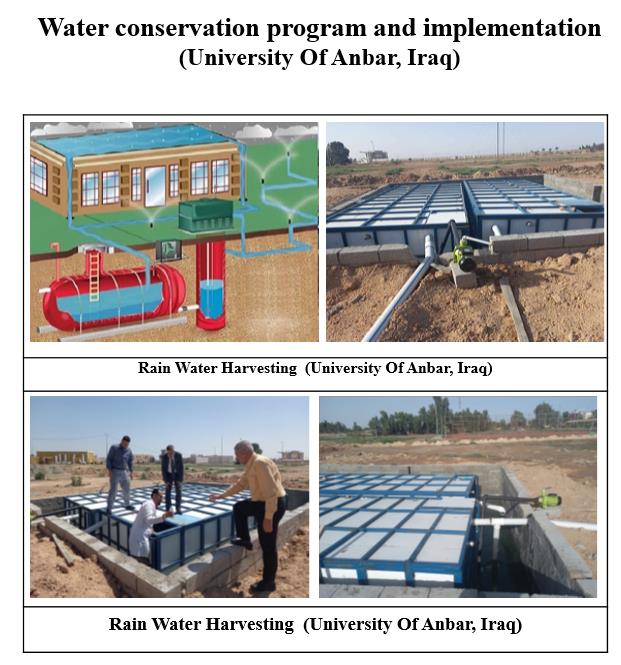
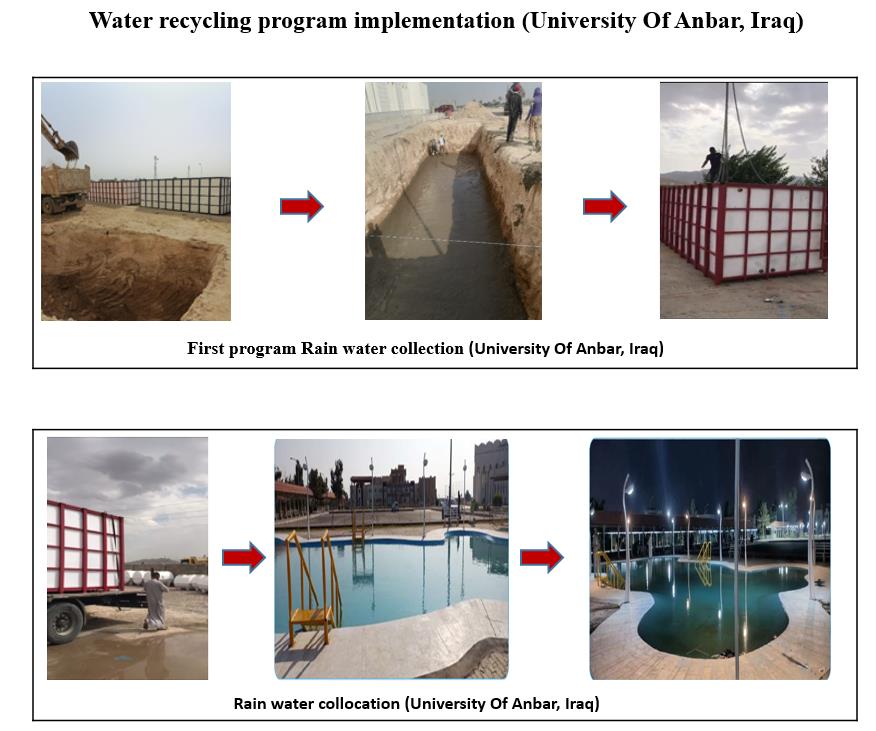
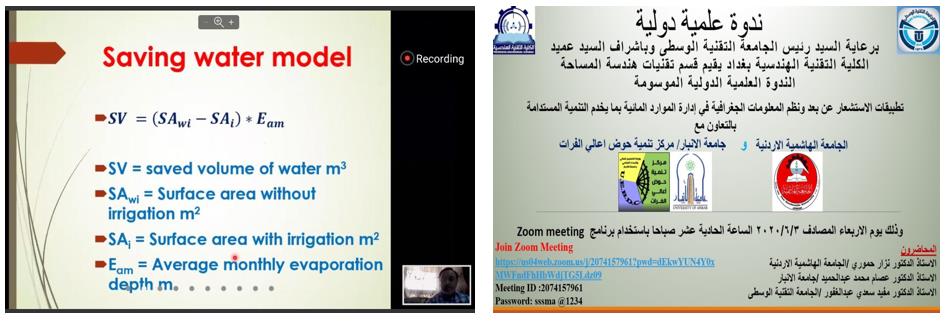
Ø Pillar 4: Waste Management"
"This pillar supports Goal 12: Responsible Consumption and Production."
University of Anbar is actively working to implement mechanisms for waste collection, segregation, and recycling of recyclable materials. Through these efforts, the university aims to reduce the environmental impact of waste and promote the concept of environmental responsibility among individuals.
Waste management at Anbar University represents a key component of its efforts to improve the campus environment and foster environmental sustainability. It is considered an essential part of the university’s vision for a green and clean campus, aligning with global trends toward waste reduction and sustainable development. The focus is placed on methods and technologies that aim to minimize waste generation, promote recycling, and ensure environmentally sound waste disposal practices.".

Goals of Waste Management at Anbar University:
1. Reducing Waste Volume:
By minimizing the amount of waste generated on campus and adopting a waste reduction policy, the university aims to lower its environmental footprint and reduce costs associated with waste transportation and management. One key approach is reducing the use of paper and plastic through the transition to electronic administration. A prominent example is the transformation of the internal classification system of Anbar University colleges into a fully integrated digital platform, eliminating the need for paper-based documentation and auditing.
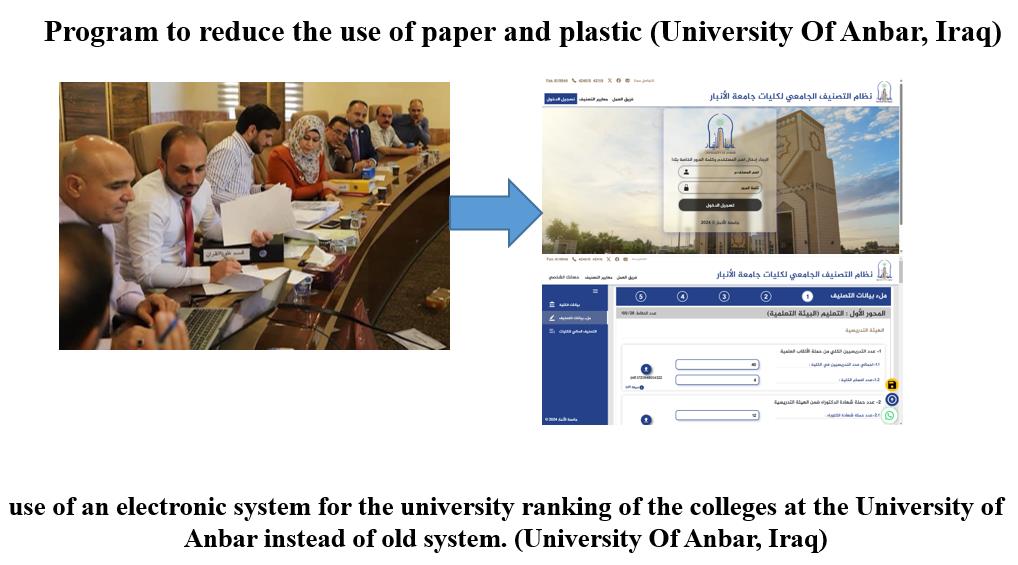

The university has adopted the use of electronic display screens in most of its corridors for announcements, awareness posters, and news updates, as illustrated below. This initiative aims to significantly reduce paper consumption and promote sustainable communication practices across the campus.
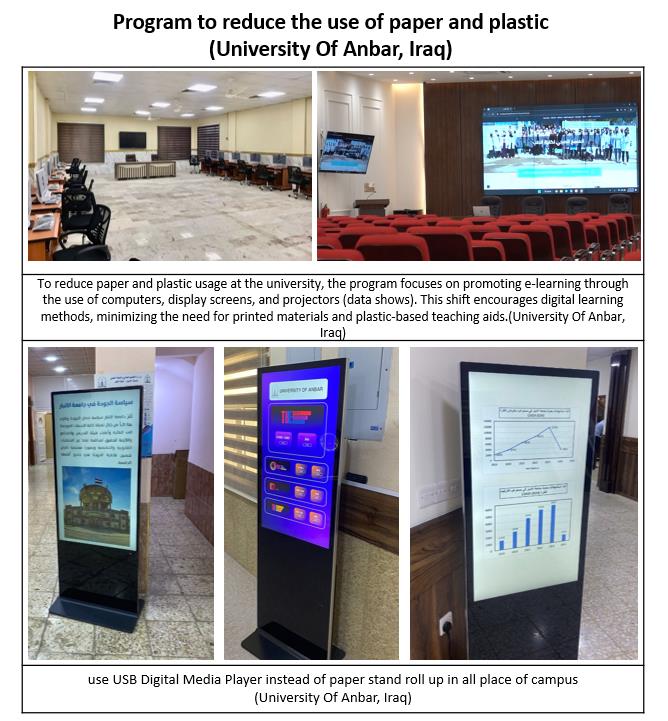
Central Library:
The library utilizes a fully integrated electronic system to facilitate the process of searching for books and borrowing them. This system enhances efficiency and reduces the need for physical resources, contributing to the overall waste reduction efforts at the university
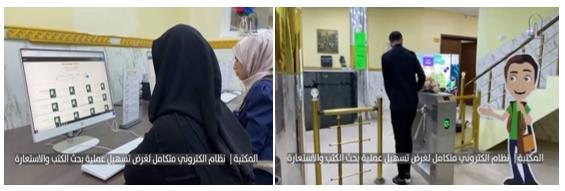
2. Recycling and Resource Utilization:
The university encourages recycling of waste materials such as paper, plastic, and metals. Designated recycling bins are strategically placed throughout the campus to facilitate waste segregation. The university actively motivates students and faculty members to properly sort their waste, promoting sustainable waste management practices.
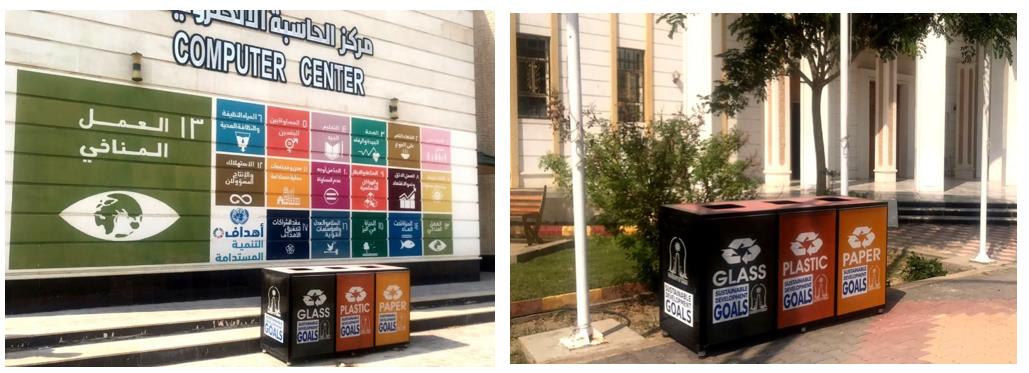
3. Environmental Awareness:
The university focuses on raising awareness about the importance of waste management among students and staff through awareness campaigns and workshops. These initiatives aim to foster a culture of environmental conservation and reduce pollution by emphasizing the significance of proper waste disposal practices.
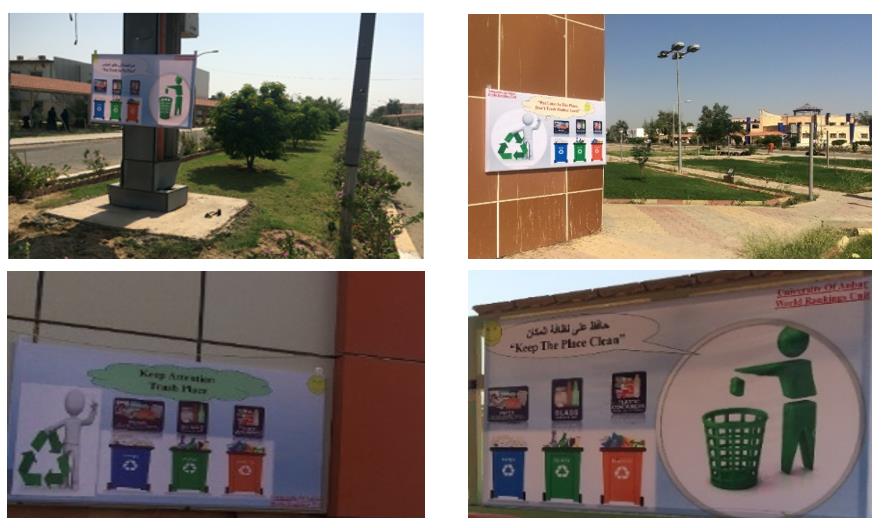
4. Reducing Organic and Inorganic Waste:
The university utilizes food scraps and organic waste from campus restaurants and cafes by converting them into organic compost, which is then used in the gardens and agricultural areas within the campus. This practice contributes to waste reduction and supports sustainable horticulture.
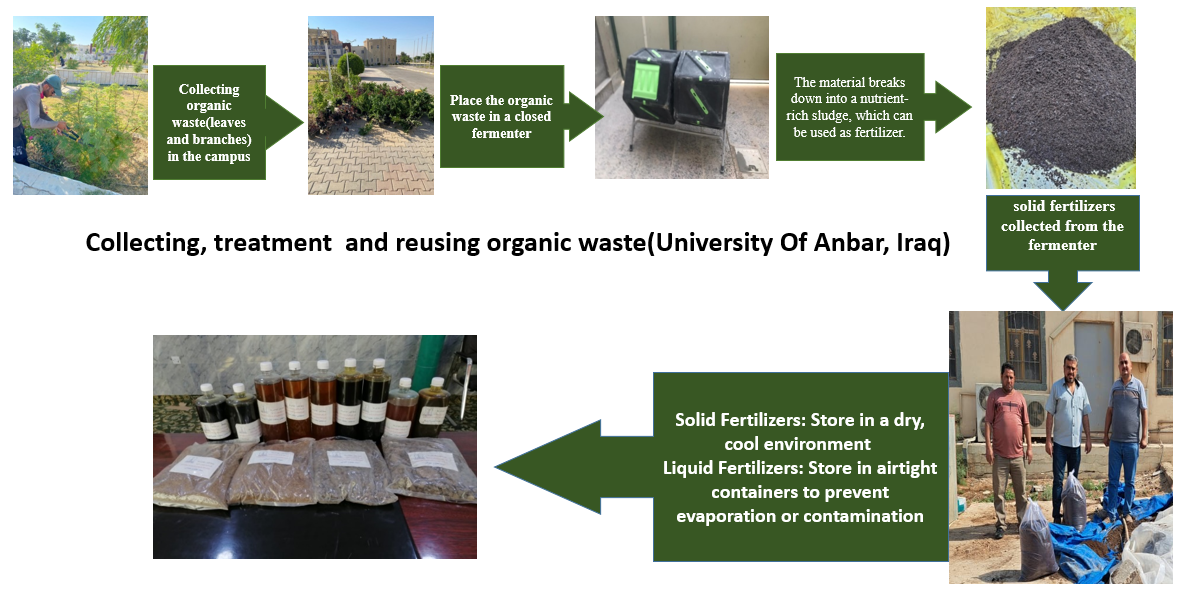

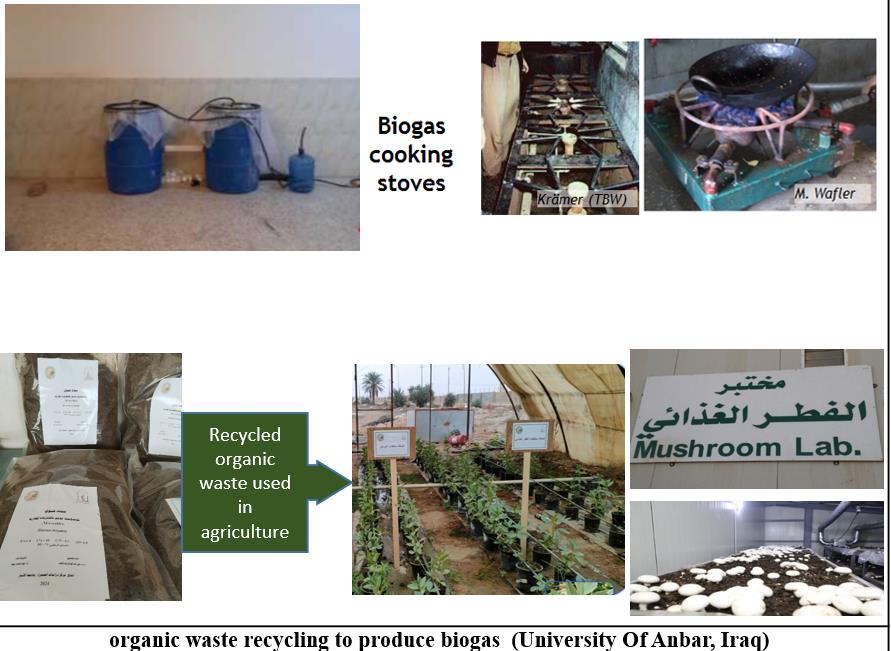
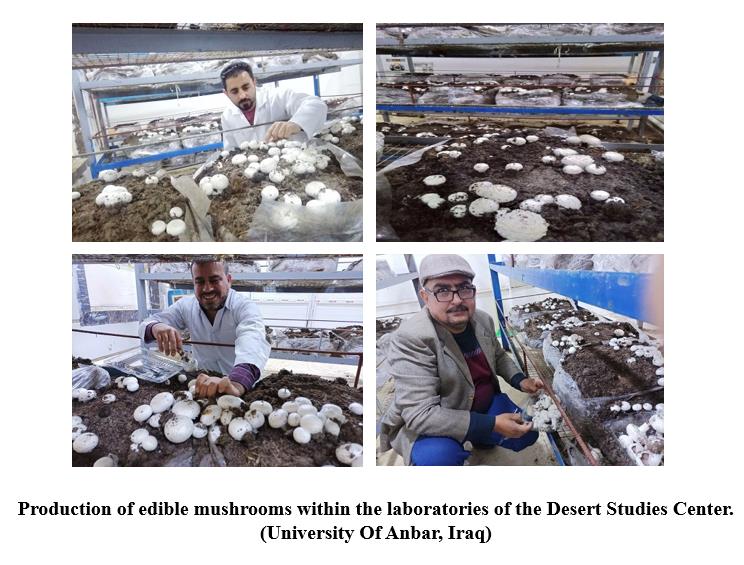
Inorganic Waste Management: Non-organic waste generated from laboratories and damaged furniture is recycled and reused. Materials such as wood, aluminum, and electronic devices are repurposed, contributing to the reduction of waste and supporting the university's sustainability goals

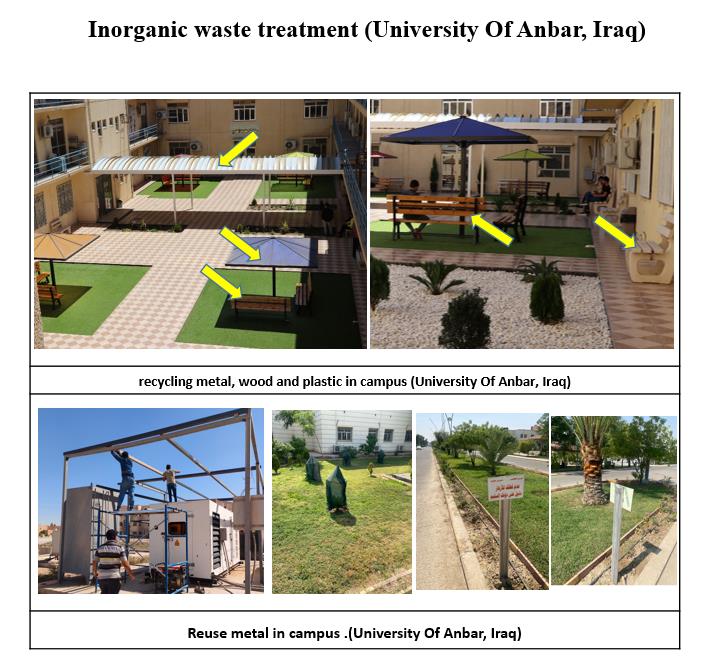
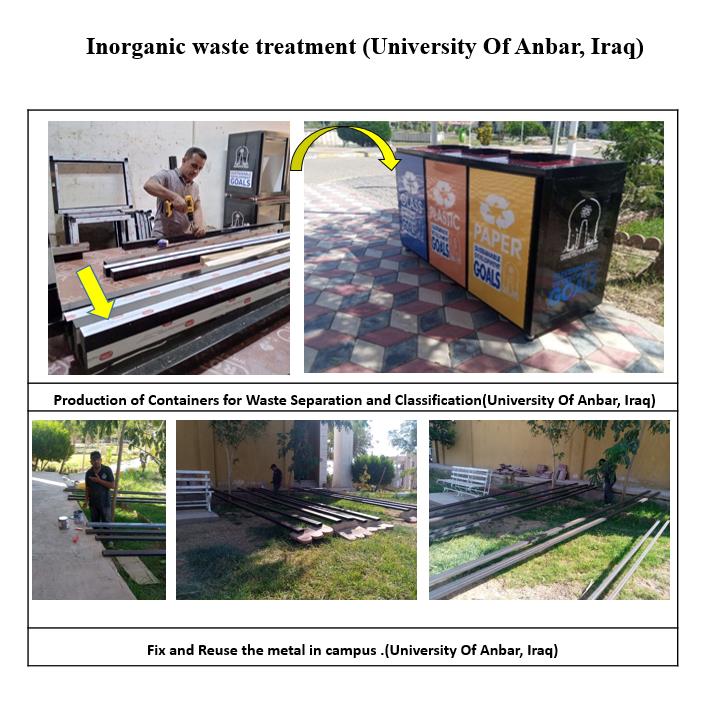
1. UI GREEN-MATRICS
The University of Anbar achieved leading positions in global sustainability rankings, securing first place among Iraqi universities and 146th globally in 2022, followed by second place nationally and 141st worldwide in 2023. This international ranking evaluates universities based on criteria that reflect their commitment to social development, environmental sustainability, eco-friendly practices, and their efforts to raise awareness through activities both on campus and within the wider community.".

.jpg)
2. "The Times Higher Education (THE) Impact Rankings
This ranking is entirely based on the 17 United Nations Sustainable Development Goals (SDGs). It is noteworthy that the University of Anbar officially entered the Times Higher Education Impact Rankings in 2021 and outperformed many long-established Iraqi universities. The university was ranked within the 400–600 range globally and placed second nationally, out of more than 1,300 participating universities worldwide in the 2021 edition."
3. United Nations Academic Impact
"The University of Anbar has obtained membership in the United Nations Academic Impact (UNAI) program on sustainability—an initiative aimed at aligning higher education institutions with the United Nations in order to actively support and contribute to its goals and priorities. These include the advancement and protection of human rights, ensuring access to education for all, promoting sustainability, and fostering conflict resolution. The university’s inclusion in this program marks a significant step toward international engagement and collaboration with global institutions. It also reaffirms the university’s commitment to achieving the Sustainable Development Goals (SDGs) and to cooperating with other academic institutions participating in the program. This achievement was made possible through the continuous support of the University President, Professor Mushtaq Talib Saleh Al-Neda, the UNAI Committee at the University of Anbar, and in collaboration with the 'Anbar University: A Green Oasis' team."
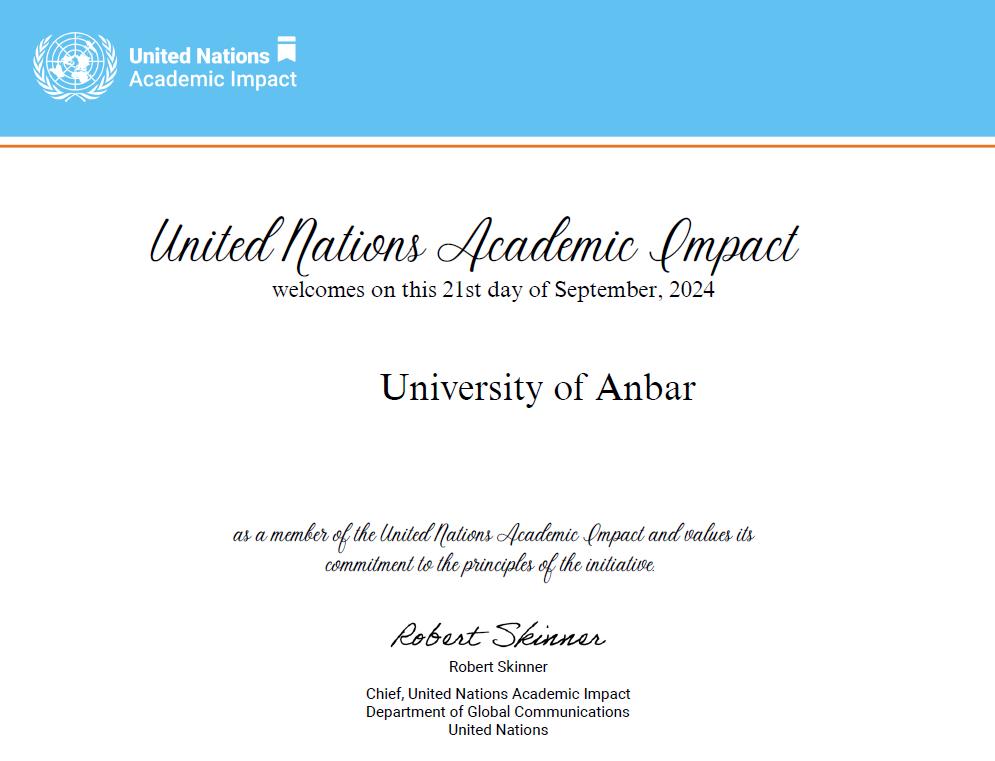
Conclusion
"This project is expected to contribute to improving the university environment, making it an ideal place for learning and recreation, while also playing a significant role in promoting environmental awareness and preserving natural resources. The presence of a green and sustainable campus encourages innovation and reflects the university’s vision to support sustainable development in the region and the broader community.
The Anbar University: A Green Oasis' project aspires to become a leading model for campus sustainability in Iraq, ultimately aiming to achieve the higher goal of a fully sustainable green university city. It seeks to make a positive societal impact by promoting public health and advancing environmental development. Furthermore, the project enhances the University of Anbar’s status as an environmentally friendly institution and represents a vital step toward creating a sustainable educational environment that inspires students and supports the overall quality of education."
(1).jpeg)